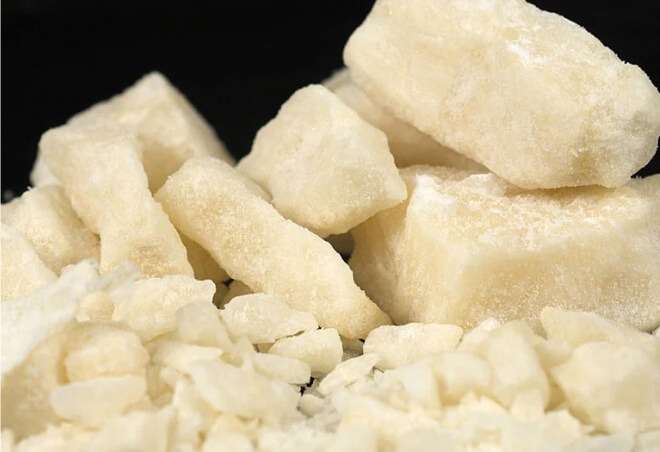Cocaine is a powerful stimulant that stimulates the brain’s pleasure centers. Young people often use it at parties, but few know how dangerous and addictive it is.
Key Points
- Cocaine effects include euphoria, alertness, and paranoia. Overdose risks have increased significantly in recent years.
- Cocaine addiction is fueled by its impact on the brain’s pleasure centers.
- Cocaine overdose deaths have tripled due to its combination with other substances.
- Cocaine is a stimulant derived from coca plants, used medically as a local anesthetic and on the streets as cocaine, coke, or blow.
- Cocaine addiction is hard to quit due to its impact on brain pleasure centers; treatment includes detox, therapies, and tailored aftercare.
What is Cocaine?
Cocaine is a stimulant derived from the coca plant native to South America. It is a Schedule II drug and is sometimes used in medical settings as an anesthetic for the respiratory tract. Recently around 5.2 million people used this drug within the last year in 2022.[1] Its street names include speed, blow, and white gold.
Side Effects of Cocaine
Cocaine’s most prominent effects include euphoria, increased alertness, paranoia, irritability, and hypersensitivity.[2] Stimulants can cause erratic or violent behavior and may increase the speed of thought and task performance.
How is Cocaine Taken?
Cocaine is a powder that is commonly snorted through the nose. This causes rapid effects. Some may dissolve and inject the powder, smoke it, or rub it on their gums. Smoking, injecting, and snorting cocaine provide rapid effects.
Cocaine Quick Reference

Drug Category
Stimulant
Commercial & Street Names
Coke, snow, blow
DEA Schedule
Schedule II
Administration
Snorting, smoking, injection, oral
Statistics on Cocaine Use, Misuse, and Addiction
Cocaine overdose deaths tripled between 2013 and 2018.[3] Despite its popularity as a recreational drug, cocaine is highly dangerous and can be fatal, especially when mixed with other substances.
Effects of Cocaine Abuse
Cocaine appeals to many young people because of its euphoric and energetic effects. It is often taken with alcohol at parties to enhance the experience. The euphoria is followed by dysphoria or a crash that causes headaches, nausea, and fatigue.
Other short-term effects of cocaine use include dizziness, chest pain, insomnia, high blood pressure, decreased appetite, dilated pupils, muscle spasms, and irregular heartbeat.
Long-term effects of cocaine include cardiovascular toxicity, mood disruption, lung damage, nasal tissue damage, malnutrition, and hallucinations.[2]
Other long-term risks include tolerance, increased risk of overdose, and damage to internal organs and the brain.[4] Using cocaine for a long time requires the person to take higher doses to get the same effect. Taking larger doses increases the risk of overdose. It can also damage one’s internal organs and brain.
Can You Overdose on Cocaine?
Many people overdose on cocaine every year. It is likely among those who use the drug for the first time and those who abuse cocaine in large quantities. Overdose risk increases when mixing cocaine with other substances, including illicit drugs.
Signs and Symptoms of Cocaine Overdose
Common symptoms of cocaine overdose include raised body temperature, rapid heart rate, high blood pressure, paranoia, and panic. Some individuals may become violent or experience psychotic symptoms, while others may lose consciousness and become unresponsive.
What to do if you suspect someone is overdosing on Cocaine:
Call 911 as soon as you see someone who has overdosed on cocaine. Try to keep the person calm and stable until the paramedics arrive. If the person is unresponsive, check for a pulse. If there is no pulse, begin CPR until help arrives.
Cocaine Addiction and Abuse
Some use cocaine a few times for fun and never try it again. Others may use it once and become addicted immediately, and Hollywood would have you believe that it’s an acceptable “white-collar drug.”
Cocaine stimulates the brain’s reward system, making it particularly difficult to stop using the drug. Approximately 20% of drug overdoses involved cocaine in the USA in 2017.[5]
Is Cocaine Addictive?
Cocaine is very addictive because it targets the brain’s pleasure centers. It also makes it difficult for the brain to produce its feel-good hormones, making the brain reliant on the drug.
Signs of Addiction to Cocaine
Secretiveness is a common sign of cocaine addiction. Individuals may steal money from friends and family or resort to criminal activities to obtain more cocaine.
Cocaine Addiction and Mental Health
Cocaine addiction can cause anxiety, depression, and hopelessness. These feelings are worsened by co-occurring disorders, such as Bipolar Disorder, impulse control disorder, and drug-induced psychosis.
Cocaine Addiction Treatment
It takes most people a few months to get through addiction treatment. The cost varies depending on your treatment program and insurance. The process may involve detox, various therapies, and aftercare. Each plan is unique to fit the individual.

Medical Detox

Detoxing is necessary for clearing your body of drugs and starting your recovery journey. Paranoia is a common withdrawal symptom associated with early cocaine detox, making it particularly dangerous to attempt this process alone.[6] A medically monitored environment for detox is safe and offers comfort measures to alleviate your experience.

Inpatient Treatment

Inpatient care is perfect for those who need something more intense than an outpatient program. You will sleep at the treatment facility and receive therapy during the day. Inpatient treatment programs are structured, providing intensive therapy and support at the facility.
Therapies Used in Cocaine Addiction Treatment
Co-Occurring Disorders
The presence of both a substance use disorder and a mental health condition will result in a dual diagnosis. These co-occurring disorders can make recovery more difficult. Common co-occurring disorders include:
- Alcoholism: Alcoholism or alcohol use disorder often correlates with the abuse of other substances.
- Depression: People may abuse cocaine to self-medicate depressive symptoms.
- Anxiety: Chronic anxiety can lead to misuse of prescription drugs or illicit substances like cocaine to manage symptoms.
Cocaine Detox and Withdrawal Management
Detoxing is a difficult process as your brain has to relearn how to function without the presence of cocaine. This may take a few days or a week, but you will have professional support at a medically monitored detox treatment center. During the withdrawal timeline, you may experience uncomfortable symptoms, but a medical detox offers comfort measures and daily care.
Frequently Asked Questions
Who Uses Cocaine?
Cocaine is a popular party drug among young people. Some may also use it to boost energy or work quicker. In 2021, cocaine was just behind cannabis as one of the top most-used illicit substances in the United States, ranking at number two.[7]
How Do People Become Addicted to Cocaine?
Cocaine targets the brain’s reward system, making it particularly difficult to stop using the drug. As the drug artificially produces intense feelings of pleasure, your brain becomes less capable of producing these sensations naturally. This can spark increased doses or more frequent use of cocaine.
Statista. (2024, March 22). Number of Americans who used cocaine in the past year 2009-2022. Retrieved from https://www.statista.com/statistics/611775/cocaine-use-during-past-year-in-the-us/ on 2024, July 03
NIDA. 2024, April 4. Cocaine . Retrieved from https://nida.nih.gov/research-topics/cocaine on 2024, June 18
Centers for Disease Control and Prevention. (2020b, October 7). Products – data briefs – number 384 – October 2020. Centers for Disease Control and Prevention. Retrieved from https://www.cdc.gov/nchs/products/databriefs/db384.htm on July 4, 2023
What is powdered cocaine? who uses the drug? – united states department … (n.d.-g). Retrieved from https://www.justice.gov/archive/ndic/pubs3/3951/3951p.pdf on July 4, 2023
Schwartz, E. K. C., Wolkowicz, N. R., De Aquino, J. P., MacLean, R. R., & Sofuoglu, M. (2022, September 3). Cocaine use disorder (CUD): Current clinical perspectives. Substance abuse and rehabilitation. Retrieved from https://www.ncbi.nlm.nih.gov/pmc/articles/PMC9451050/ on July 4, 2023
Morton, W. A. (1999, August). Cocaine and psychiatric symptoms. Primary care companion to the Journal of clinical psychiatry. Retrieved from https://www.ncbi.nlm.nih.gov/pmc/articles/PMC181074/ on July 4, 2023
Elflein, J. (2023, January 17). Cocaine use within the past year adults by state U.S. 2019-2020. Statista. Retrieved from https://www.statista.com/statistics/806271/past-year-cocaine-use-us-adults/ on July 4, 2023
